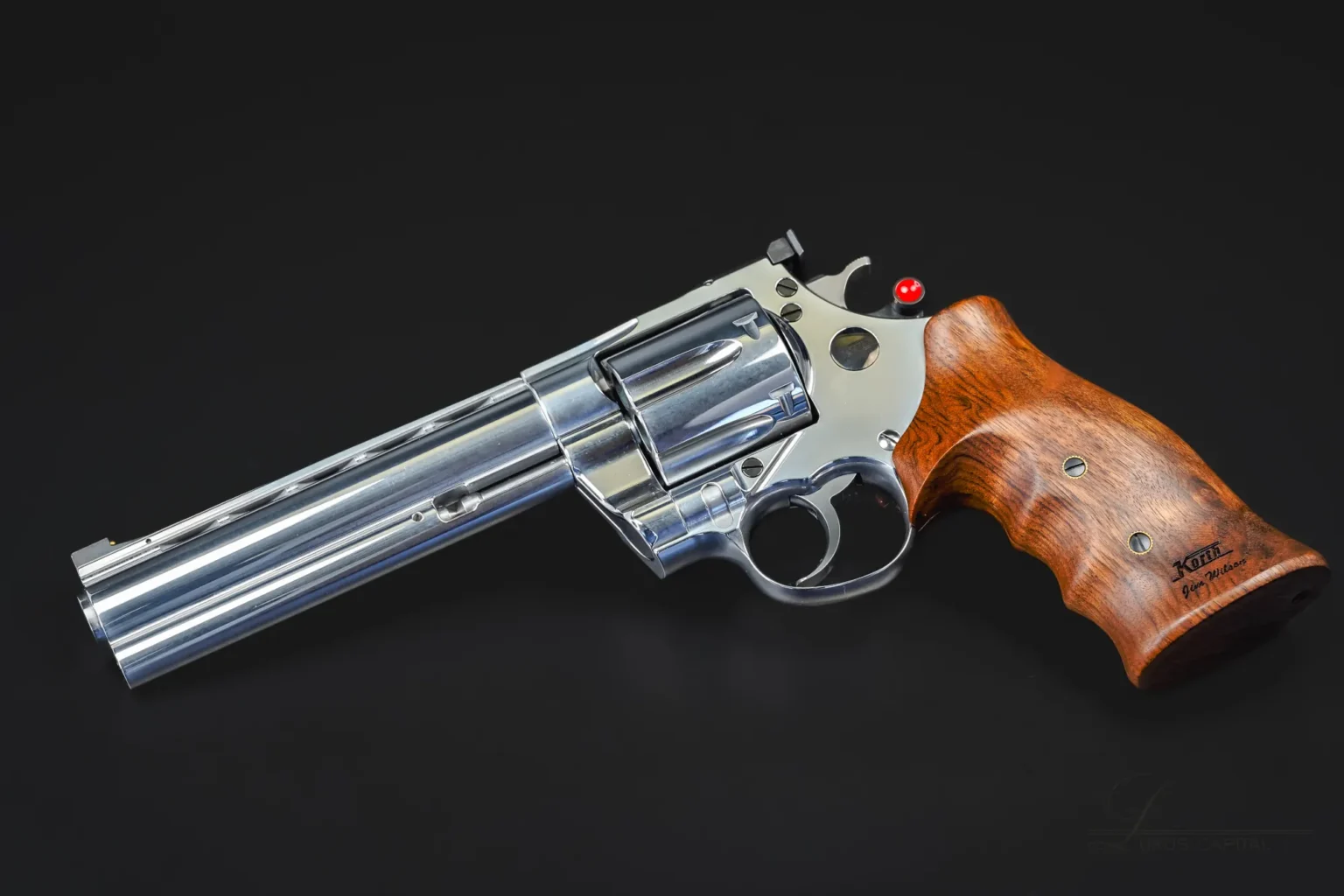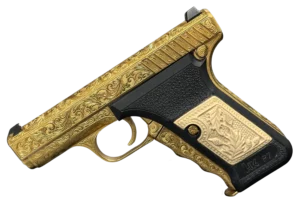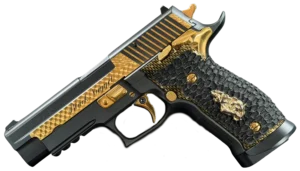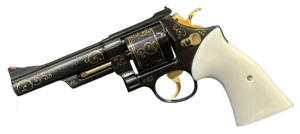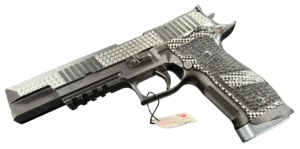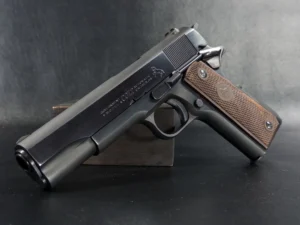Key Takeaways:
- Precision isn’t just technical — it’s emotional: The Triple Lock and Korth revolvers aren’t just mechanically impressive; they feel different. The weight, the smoothness, the care in every detail — it all adds up to something that sticks with you. These guns weren’t built to be disposable. They were built to matter.
- Great design bridges time and place: Smith & Wesson’s Triple Lock came out in 1908. Korth revolvers hit their stride in postwar Germany. Completely different eras, different cultures — and yet, they’re chasing the same idea: make the best revolver possible. When done right, craftsmanship speaks a universal language.
- Revolvers like these remind us what we’ve lost — and what’s still possible: In a world of shortcuts and mass production, the Triple Lock and Korth show us what happens when you slow down and do it right. They’re not just throwbacks — they’re blueprints for how to build something worth building.
Some revolvers are just… guns. They go bang, they do their job, and that’s it. And then some revolvers whisper something more — about the era they came from, the people who built them, and the obsession with getting things just right. The Smith & Wesson Triple Lock was one of those revolvers. And weirdly enough, so is the Korth.
Two very different worlds. One surprisingly similar obsession: precision.
The Smith & Wesson Triple Lock: When Craftsmanship Was King
Let’s start back in 1908. The early 20th century was a chaotic yet exciting time for firearms, marking the transition from black powder to smokeless powder and metallic cartridges, as well as steel frames that could withstand high pressure.
Smith & Wesson dropped something special that year: the .44 Hand Ejector First Model. Catchy name, right? Everyone just called it the Triple Lock.
And the nickname? It wasn’t marketing fluff. It was literal. The revolver locked its cylinder in not one, not two, but three places — front, back, and center. That third locking point at the front of the ejector rod? Total game changer. It stabilized the cylinder like nothing else on the market. Accuracy? Tight. Reliability? Rock solid. This wasn’t just a revolver — it was a mechanical flex.
A Weapon, Sure — But Also a Statement
Back then, revolvers were still the go-to sidearms for police and military alike. Automatics were coming, but hadn’t quite taken over. So for a revolver to get everything right… People noticed.
The Triple Lock wasn’t just built to work. It was built to impress. You could feel it in the machining, in the smoothness of the action, in the balance when you held it. Everything about it screamed confidence, like it knew it was ahead of its time.
It was the kind of gun that made shooters nod and say, “Damn, they nailed it.”
Let’s Talk Specs (But Not Like a Brochure)
Okay, for the curious: the Triple Lock typically came with a 6.5-inch barrel, chambered in .44 Special — a round with real punch, especially for its day. Six rounds in the cylinder. Heavy, yes. But balanced. Purposeful.
And the .44 Special? It didn’t mess around. Solid stopping power, but more controllable than, say, the .44 Magnum that came later. A cartridge that paired perfectly with the revolver’s sturdiness and accuracy.
But the real magic wasn’t just in the numbers. It was in the feel. The kind of gun you don’t forget after firing just once.
A Short Run — But a Long Legacy
Here’s the twist: despite all the praise, the Triple Lock didn’t stay in production long. It was expensive to make. All that extra machining? It adds up. By 1915, it was gone — at least officially.
But its spirit? That lived on.
Gunmakers borrowed from it for decades. The extra lock system became a kind of North Star for revolver precision. Even revolvers that didn’t copy it directly still chased that level of craftsmanship. It set a tone: that a wheelgun could be more than just functional. It could be a masterpiece.
Jumping Ahead: Enter Korth
Fast forward about half a century. Germany, 1950s. Post-war, rebuilding, reimagining. And somewhere in that mess, a guy named Willi Korth — a train engineer by trade — decided that none of the revolvers out there were quite good enough.
So he built his own. Because, of course, he did.
Korth wasn’t just trying to make a revolver. He wanted to make the revolver. The one that set the new bar.
And if you’ve ever held a Korth in your hand, you know he pulled it off.
Korth: Where Engineering Gets Personal
There’s a reason Korth revolvers have a cult following — and not just among collectors. These things are ridiculous. Ridiculously well made. Ridiculously smooth. Ridiculously customizable.
Each one is basically built to order. Want a certain grip? A weird barrel length? Custom finish? No problem. Korth’s approach wasn’t “here’s a model, take it or leave it.” It was “tell us what you want, and we’ll make it perfect.”
And somehow… they do.
Korth revolvers aren’t mass-produced tools. They’re precision instruments with personality.
Not Just Pretty — Built to Perform
Of course, all the customization and hand-fitting wouldn’t matter if they didn’t shoot well. But Korth revolvers? They shoot really well.
These guns are built using insanely tight tolerances. High-grade steel, precision machining, and a kind of over-the-top attention to detail that borders on obsessive.
The triggers are buttery. The lockup? Tank-like. Even the finishes feel more like jewelry than industrial coatings. You can actually feel the engineering every time you cock the hammer.
It’s one of those things you just have to experience to understand. Like driving a Porsche after years in a beat-up pickup. Same basic function — wildly different experience.
The Triple Lock Lives Again (Sort Of)
Now here’s where it gets cool. In a nod to history, Korth didn’t just blaze its own trail — it also looked back.
Korth made its own version of the Triple Lock revolver. Yep, a modern German reinterpretation of that iconic Smith & Wesson design. And, spoiler alert: it’s incredible.
They kept the triple-point cylinder lock. Gave it a modern twist with their signature engineering magic. What came out is a revolver that feels like an homage and an evolution at the same time.
Classic bones. Modern muscle.
It’s the kind of gun that makes old-school collectors smile — and new-school shooters raise their eyebrows and go, “Wait, that’s a revolver?”
Then and Now: Bridging the Gap
Here’s the bigger story, though. It’s not just about two companies or two revolvers. It’s about a lineage — a through-line of obsession with precision, from the early 1900s in America to post-war Germany to wherever you’re reading this right now.
The Triple Lock and the Korth are separated by decades, continents, and wildly different manufacturing philosophies. But they share DNA.
They both ask the same question: “How good can we make this?”
And more importantly: “What if we didn’t cut corners?”
Why It Matters (Yes, Even Now)
You might wonder — in an era of polymer pistols and red-dot optics and AR pistols — who still cares about revolvers?
Fair question. But here’s the thing: revolvers like the Triple Lock and the Korth aren’t trying to win tactical contracts. They’re not chasing trends.
They’re about something older. More enduring.
They’re about the experience.
The weight of the steel. The smooth roll of the cylinder. The feel of a hammer being drawn back, with just the right resistance. The knowledge that someone — maybe multiple someones — spent hours getting it just right.
It’s not nostalgia. It’s appreciation.
The Romance of Craftsmanship
Let’s be honest: we don’t build things like we used to. Or if we do, it costs a small fortune. Instant gratification has taken the place of long-term satisfaction.
But revolvers like these? They’re stubborn little reminders that real craftsmanship still exists. That precision still matters. Beauty and function don’t have to live on opposite ends of the spectrum.
They’re throwbacks, sure. But they’re also benchmarks.
Korth’s Modern Edge
To be clear, Korth isn’t stuck in the past. They’ve embraced modern materials, tech, coatings, and CNC machining. Their guns are as much 21st-century machines as they are tributes to old-world craftsmanship.
But they’ve managed to balance both.
You can get a Korth with Pic rails and optics mounts. Alternatively, you can opt for one that resembles a 1950s gunsmith’s dream. Either way, it’ll shoot like a laser and feel like it belongs on a velvet pillow.
The Collector’s Angle
If you’re the collecting type, both the Triple Lock and the Korth are holy grail material.
Original Triple Locks in good shape? Not easy to find. And not cheap. But they’re tangible pieces of history — tools that helped shape the revolver as we know it.
Korths, on the other hand, are more like limited-run Ferraris. Custom-built. Carefully preserved. Occasionally shot. Always admired.
Each one feels personal, like it has a story — even if you’re the one who has to write it.
Final Thoughts (If You Made It This Far, You’re One of Us)
There’s something quietly powerful about precision. About refusing to settle for “good enough.” And in the world of revolvers, few models represent that spirit better than the Smith & Wesson Triple Lock and the Korth legacy.
They’re decades apart. Oceans apart. But connected in a weird, wonderful way — by a shared obsession with getting every last detail right.
You don’t have to be a gunsmith or historian to appreciate that. You just have to care about things that are built well and built to last.
So if you ever get the chance to hold one of these revolvers — really hold it — take a second. Feel the weight. Notice the balance. Work the action. Think about the people who made it. The people who carried it. The people who fell a little in love with it, just like you probably will.
Because in the end, that’s what precision does.
It makes you feel something.
Frequently Asked Questions
The Triple-Lock revolver, introduced by Smith & Wesson in 1908, is considered a pioneering model in revolver design, known for its third lock mechanism, which provided exceptional durability and accuracy. It set a new standard in precision revolver manufacturing.
Korth revolvers, developed in post-war Germany, pushed precision further by using top-quality materials and meticulous handcrafting techniques. Korth revolvers are renowned for their smooth operation, custom features, and exceptional durability.
Korth revolvers stand out due to their hand-fitted construction, attention to detail, and ability to customize components such as triggers and grips. They offer an elite experience in precision shooting unmatched by many other brands.
Revolver design has evolved from the robust, straightforward Triple-Lock mechanism to more sophisticated and refined builds, such as the Korth, incorporating advancements in materials science, precision engineering, and ergonomic customization.
Yes, due to their rarity, craftsmanship, and high performance, Korth revolvers are highly sought after by collectors, especially vintage or limited-edition models.


